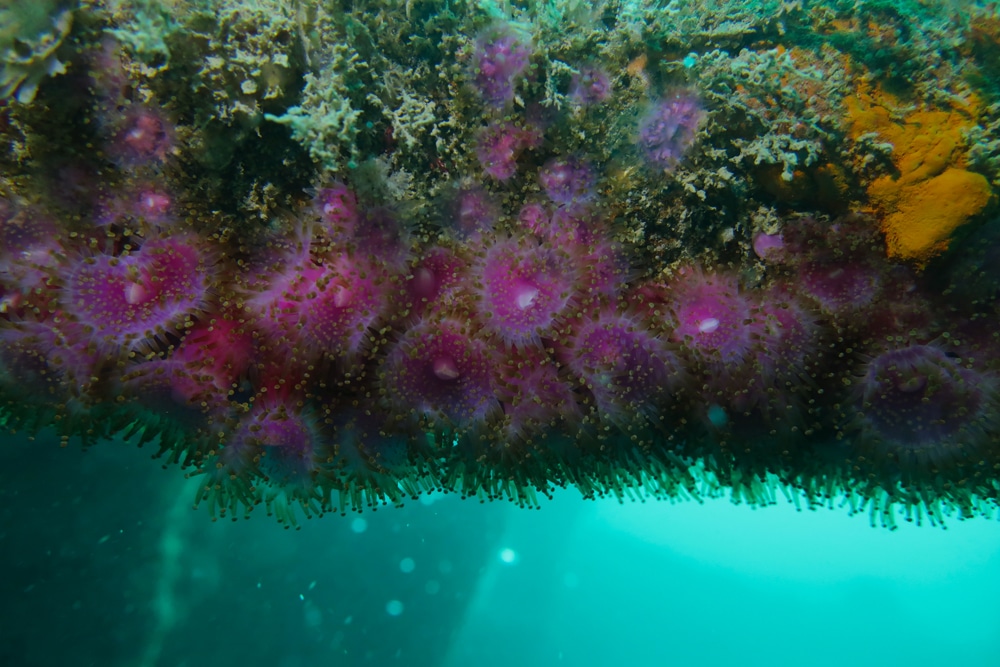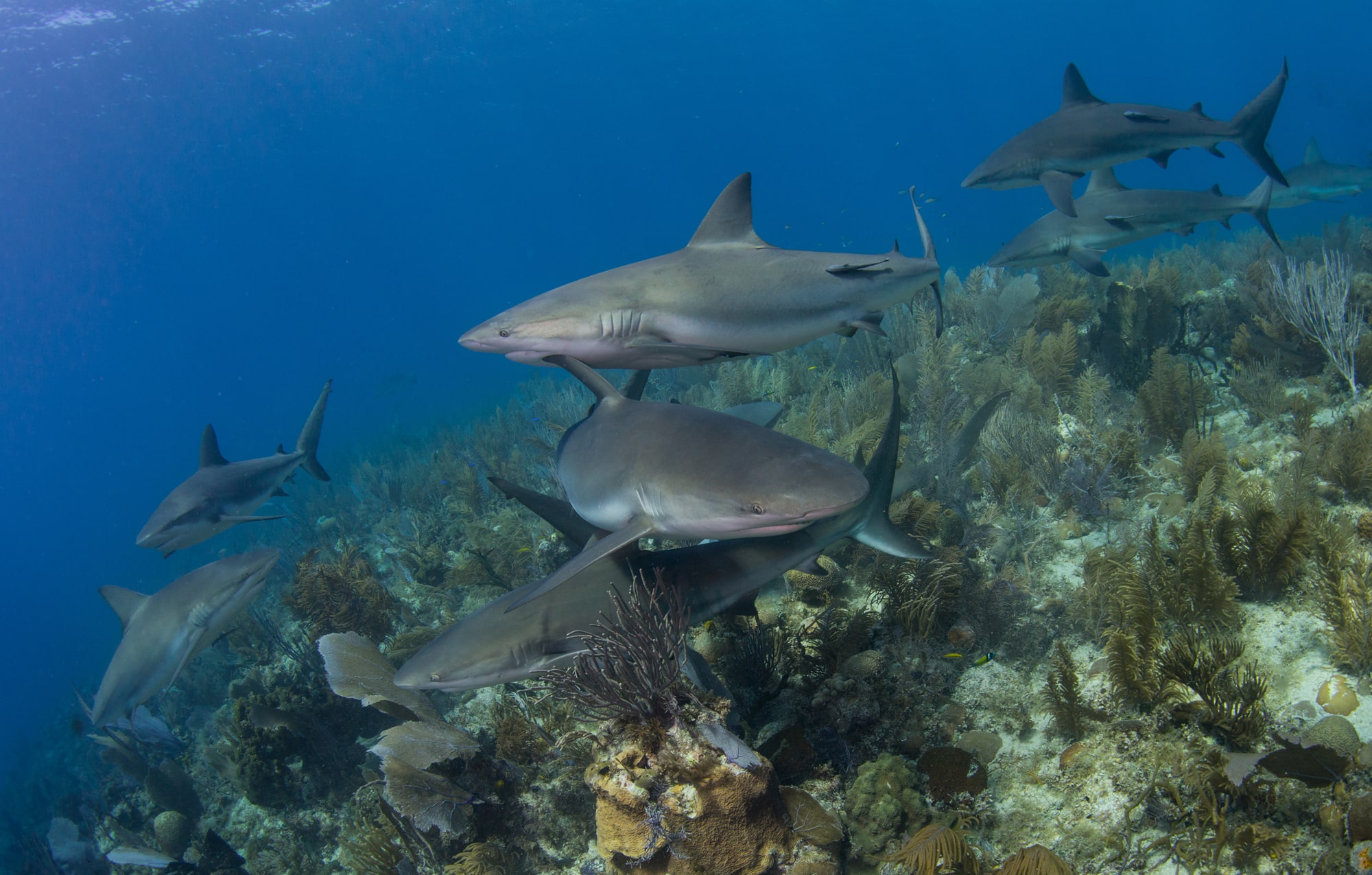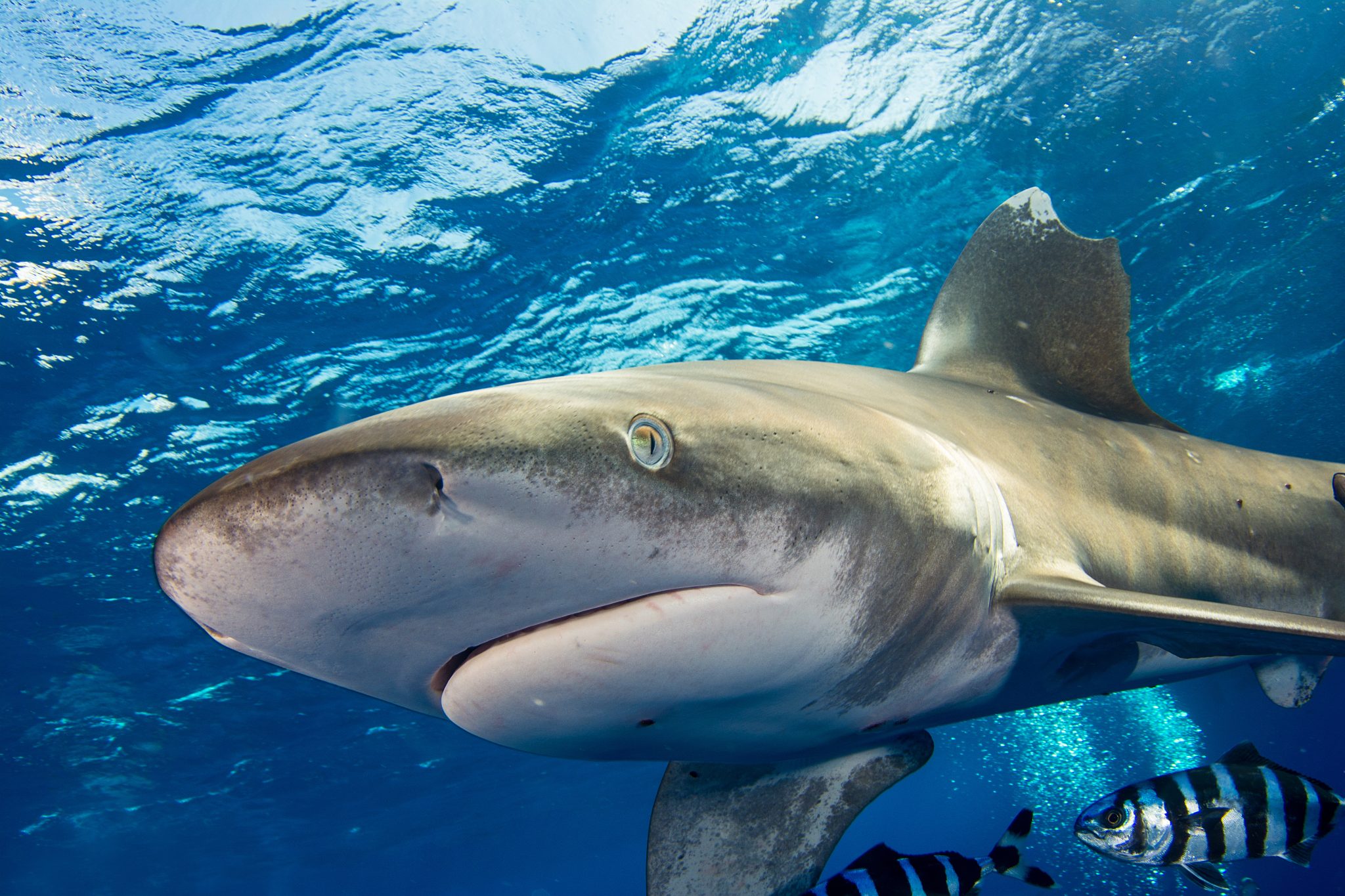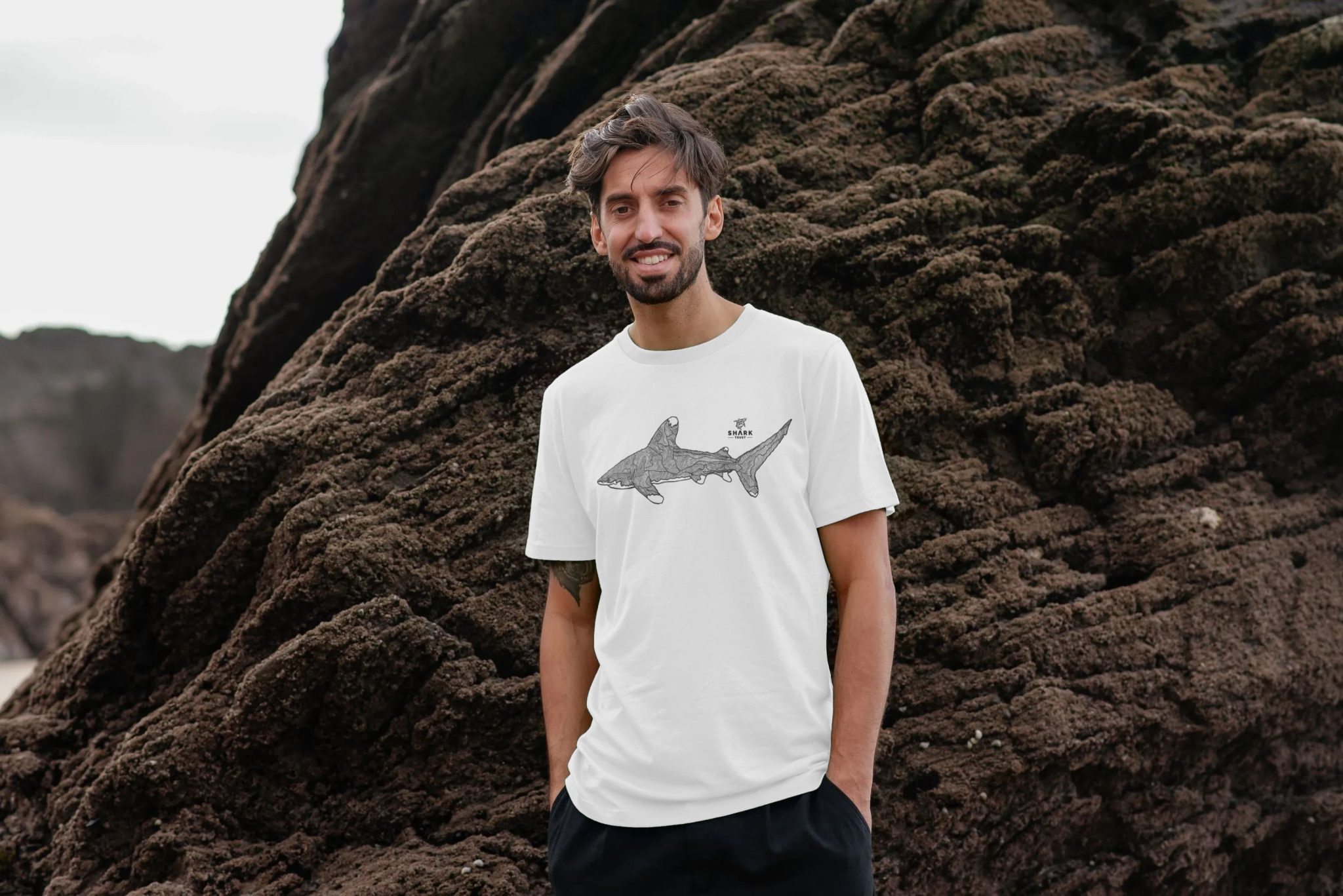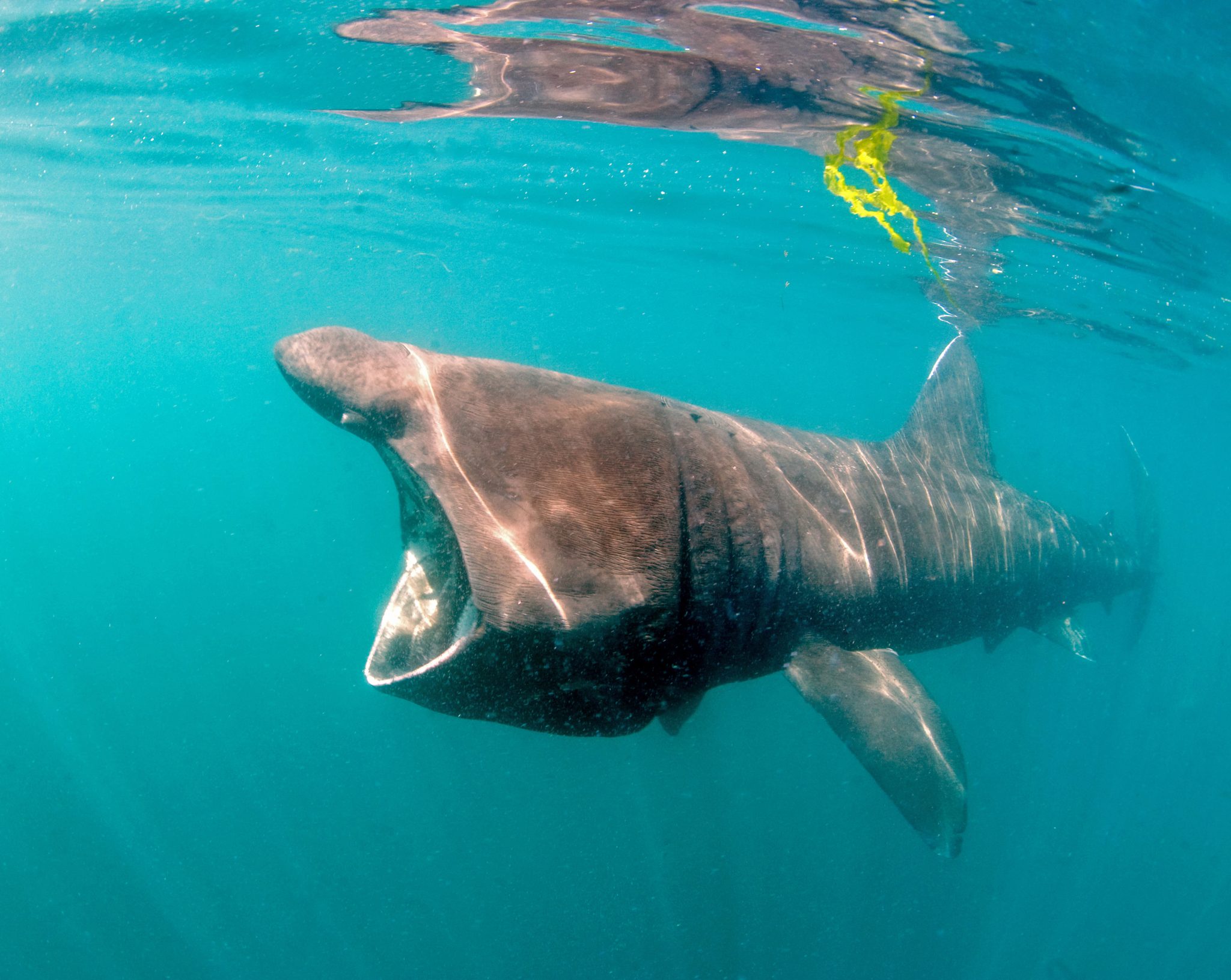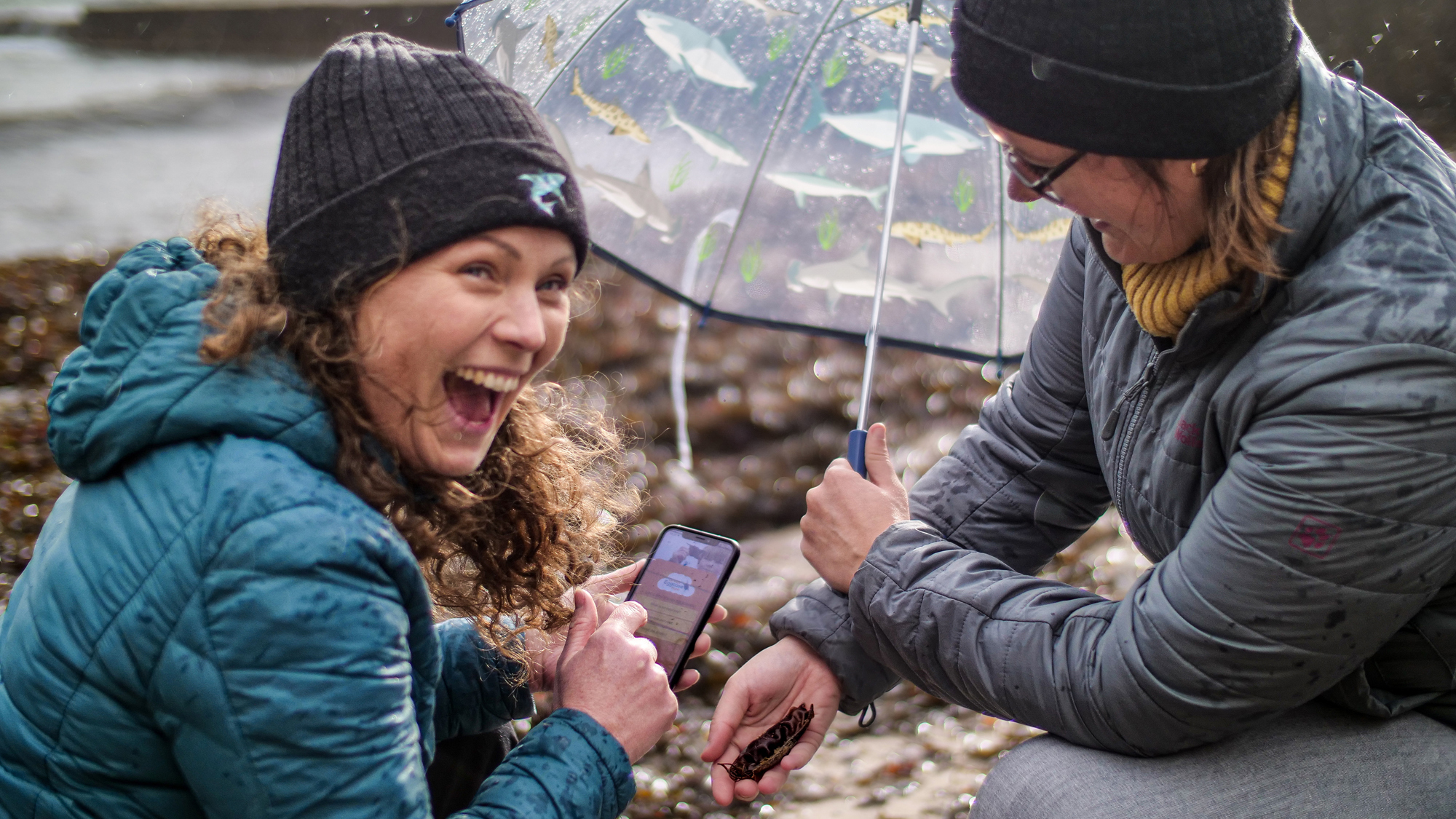Marine Life & Conservation
Diving with British Marine Life: The Grey Triggerfish
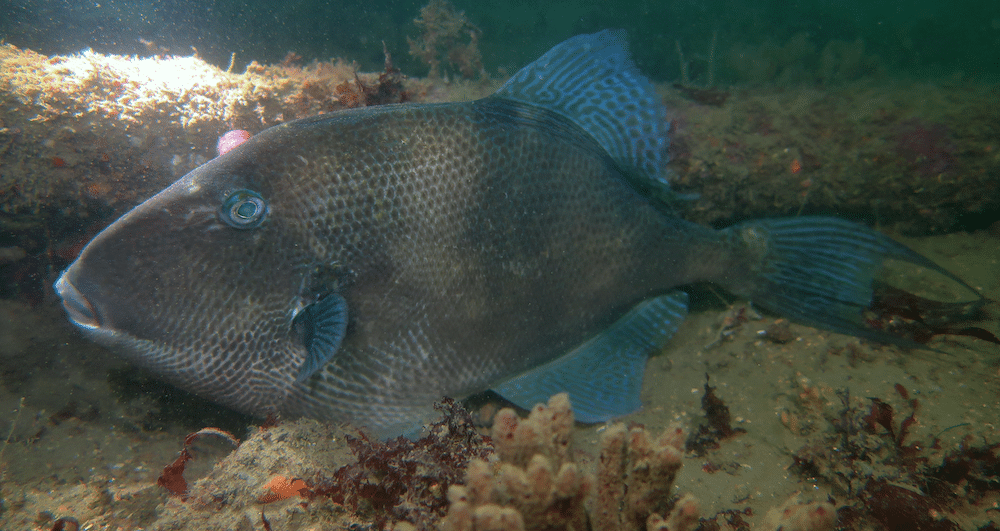
Part 2 of a new series by blogger Georgie Bull…
Before starting University last September, I dove Chesil Cove in the hope that I could get a glimpse of a triggerfish on the Royal Adelaide wreck. Grey triggerfish (Balistes capriscus) are seasonal visitors to our waters and are known to congregate on the wreck at a similar time each year. They are often fished off or battered by storms fairly rapidly, so sightings are temporally confined too.
For anyone unfamiliar with Chesil, large pebble ridges create a wonderful pre and post dive work out for any diver keen enough to get in. Jon Bunker (Instagram: @jon_bunker) my Dorset dive buddy did a fantastic job of locating the wreck, and we had a very pleasant dive overall. Jon has invited me along on lots of his diving antics, and he’s the main reason I have so many photos to share.
On the dive we saw the likes of jewel anemones, congers, and a wonderful variety of wrasse. Without a trigger in sight, a couple of tompot blennies fighting one another became the main highlight. After the dive we spoke to a recreational angler on the beach, who mentioned he’d caught (and returned) a triggerfish while we were in the water. We were so close to a sighting!
Once I’d recovered from the pebble ridges and put my kit away, I accepted that I’d have to wait until next year.
Fast forward to a few weeks time, and the University of Plymouth’s Scuba Society were running their first shore club dive at Firestone Bay. I joined in, hoping to see a few different tunicates or echinoderms that I may not see so often in Lyme Bay. Instead, I was greeted with a large and relatively healthy triggerfish sat on the substrate. It turns out, I didn’t need to scale pebble ridges or use Jon’s impressive navigation skills to have an encounter with this species!
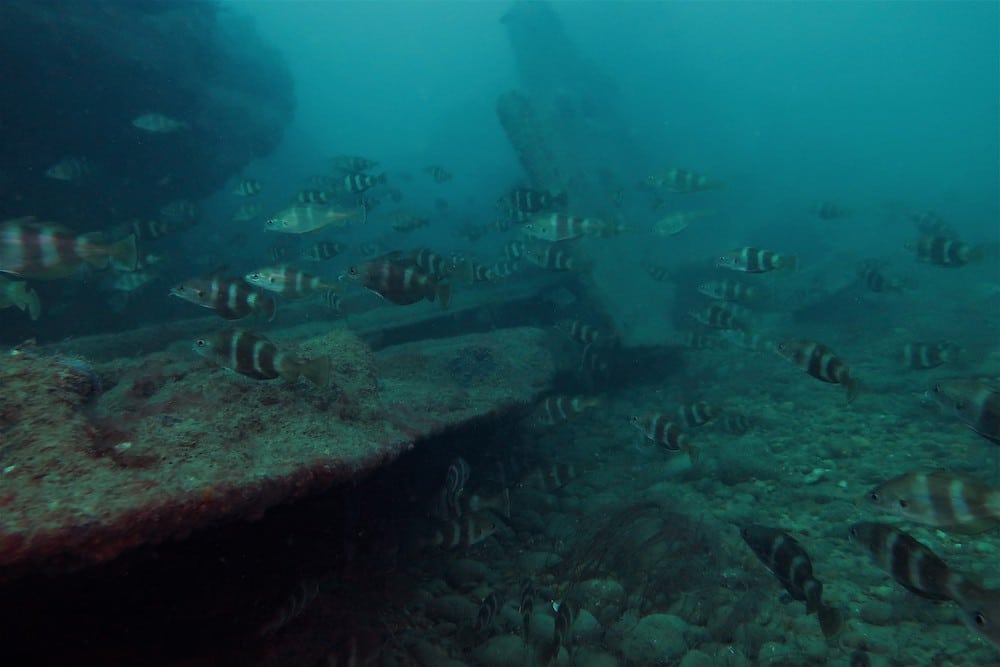
Profile
Triggerfish have defensive spines on their dorsal which are used to avoid predation, but also wedge themselves into crevices outside of harms way. Like their namesake suggests, the erection of their largest spine is triggered by the depression of a smaller spine closer to their head. Triggerfish are also known for aggressive behaviour, as they are particularly territorial over their nests.
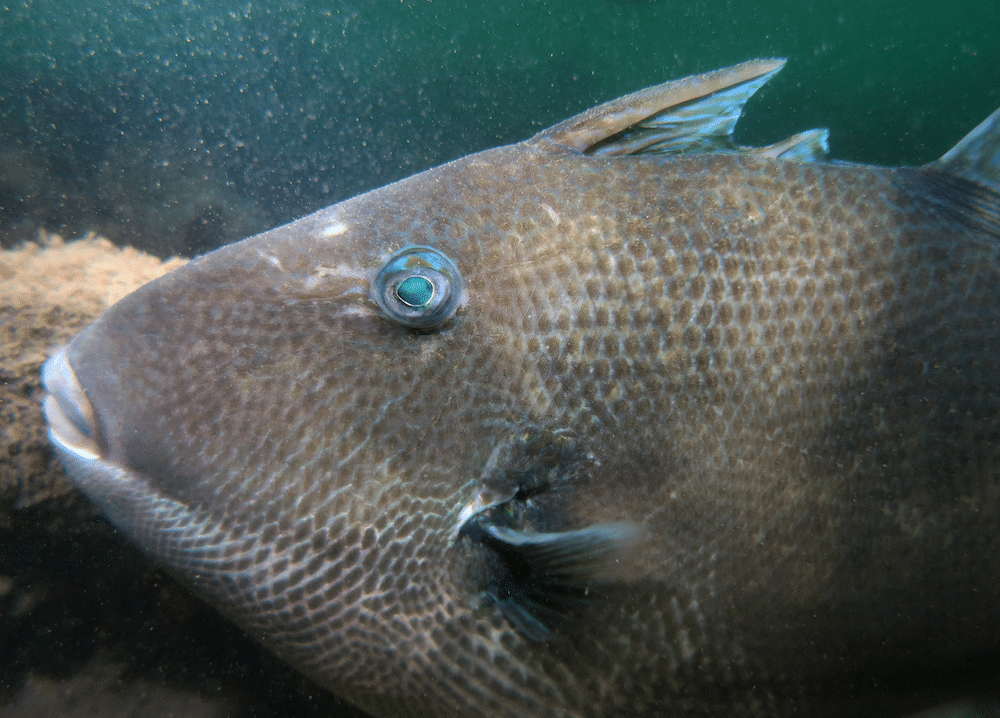
Grey triggerfish are a Southern European species, and are valued by anglers both commercially and recreationally. This value has resulted in them being categorised as ‘vulnerable’ by IUCN. They are also the only triggerfish encountered in UK waters, with the other 39 species of triggerfish found typically in warmer waters.
Literature
In recent years, it’s been reported that grey triggerfish are becoming increasingly common in the UK. We have plenty of evidence to suggest that our oceans are warming, and we know from previous instances that migratory pelagic fish like the grey triggerfish are capable of shifting their distribution in response to environmental change.
In 1930, a grey triggerfish was recorded in St Malo, France; by the 1990s, they were being described as common in Jersey. In southern parts of the UK grey triggerfish sightings were unheard of too, up until the early 2000s. They are now regarded as common in some areas (like Chesil) at certain times of the year. It would be interesting to see this shift quantified more and understand if the increased catch rates may also be influenced by changing fishing methods and intensity.

References:
- https://www.fisheries.noaa.gov/species/gray-triggerfish
- https://www.iucnredlist.org/species/193736/97662794#threats
- https://www.bbc.co.uk/news/world-europe-jersey-46591920
- https://www.gov.je/SiteCollectionDocuments/Government%20and%20administration/R%20Non-native%20Marine%20Species%20in%20the%20Channel%20Islands%2020171222%20DM.pdf
Hear more from Georgie here: https://georgiebullphotography.home.blog/
Marine Life & Conservation
Leading UK-based shark conservation charity, the Shark Trust, is delighted to announce tour operator Diverse Travel as a Corporate Patron
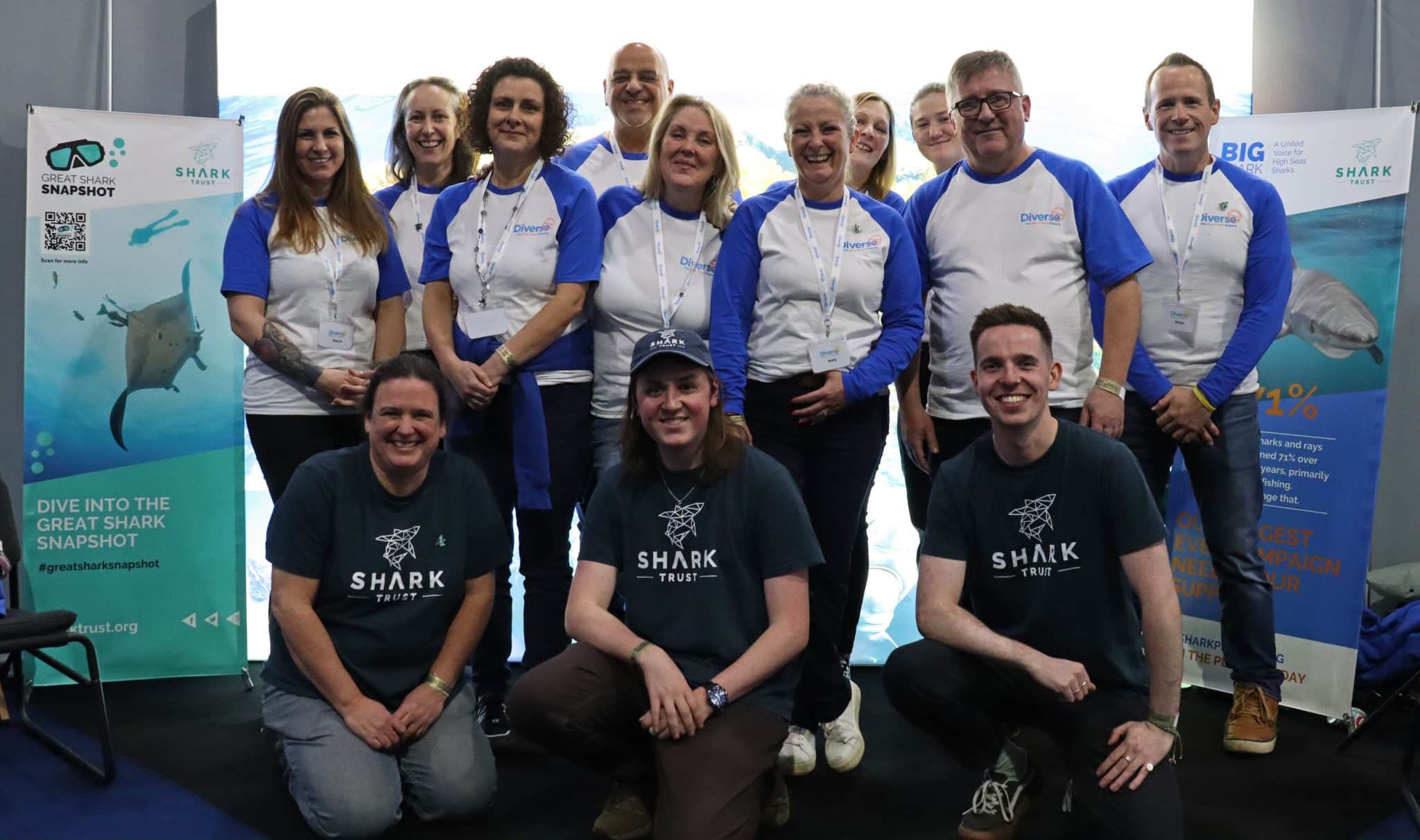
 Corporate Patrons provide a valuable boost to the work of The Shark Trust. The Trust team works globally to safeguard the future of sharks, and their close cousins, the skates and rays, engaging with a global network of scientists, policymakers, conservation professionals, businesses and supporters to further shark conservation.
Corporate Patrons provide a valuable boost to the work of The Shark Trust. The Trust team works globally to safeguard the future of sharks, and their close cousins, the skates and rays, engaging with a global network of scientists, policymakers, conservation professionals, businesses and supporters to further shark conservation.
Specialist tour operator Diverse Travel has operated since 2014 and is committed to offering its guests high quality, sustainable scuba diving holidays worldwide. Working together with the Shark Trust will enable both organisations to widen engagement and encourage divers and snorkellers to actively get involved in shark conservation.
“Sharks are truly at the heart of every diver and at Diverse Travel, we absolutely share that passion. There is nothing like seeing a shark in the wild – it’s a moment that stays with you forever!” says Holly Bredin, Sales & Marketing Manager, Diverse Travel.
“We’re delighted to celebrate our 10th year of business by becoming a Corporate Patron of the Shark Trust. This is an exciting partnership for Diverse and our guests. We will be donating on behalf of every person who books a holiday with us to contribute towards their vital shark conservation initiatives around the world. We will also be working together with the Trust to inspire divers, snorkellers and other travellers to take an active role – at home and abroad – in citizen science projects and other activities.”
Paul Cox, CEO of The Shark Trust, said:
“It’s an exciting partnership and we’re thrilled to be working with Diverse Travel to enable more divers and travellers to get involved with sharks and shark conservation. Sharks face considerable conservation challenges but, through collaboration and collective action, we can secure a brighter future for sharks and their ocean home. This new partnership takes us one more valuable step towards that goal.”
For more information about the Shark Trust visit their website here.
For more about Diverse Travel click here.
Marine Life & Conservation
Shark Trust Asks Divers to help with Shark Sightings this Global Citizen Science Month
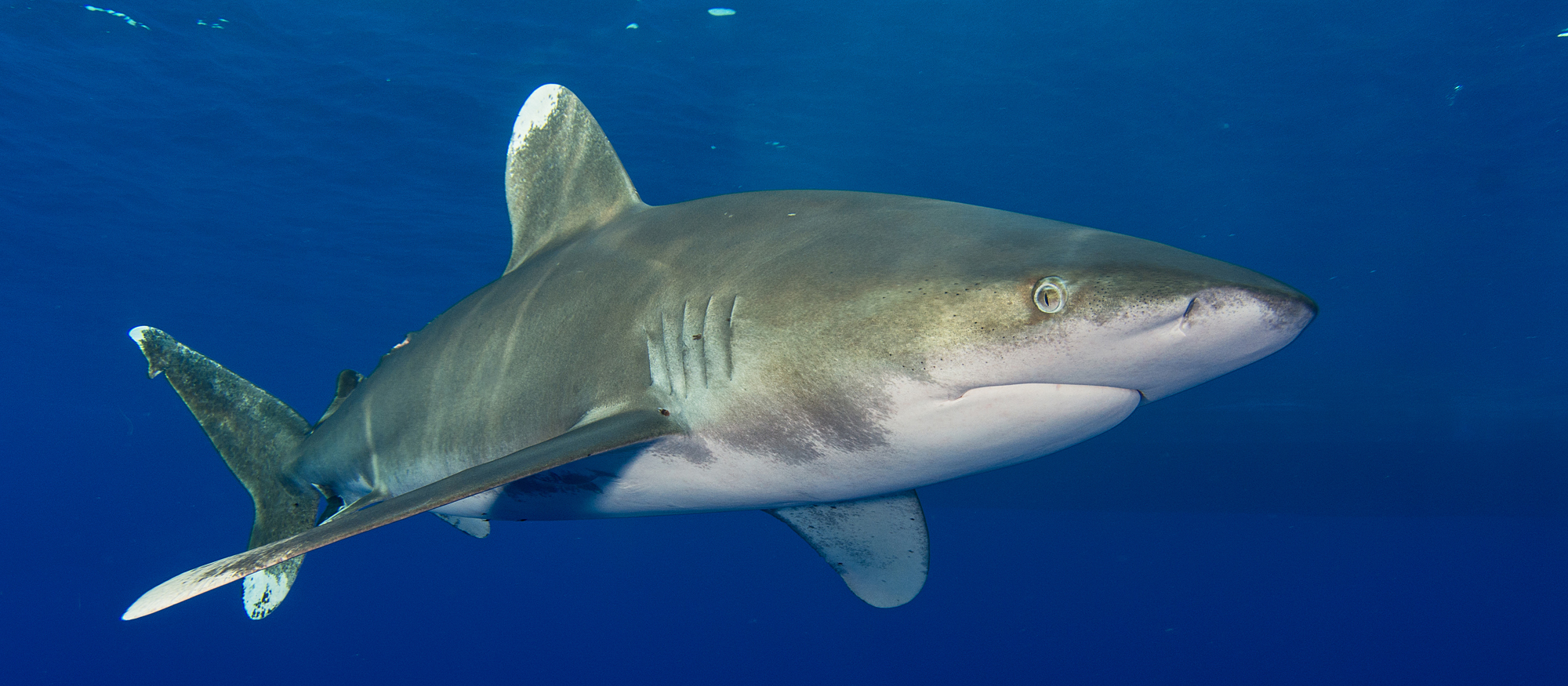
 Whether you are stuck for ideas of what to do with the kids or are off on the dive trip of your dreams. You can get involved in Citizen Science Month and help the Shark Trust by providing vital data about sharks are rays both close to home and further afield.
Whether you are stuck for ideas of what to do with the kids or are off on the dive trip of your dreams. You can get involved in Citizen Science Month and help the Shark Trust by providing vital data about sharks are rays both close to home and further afield.
In addition to reporting the sharks and rays you see on your dives, the eggcases you find on the beach, the Shark Trust is looking for some specific data from divers who are asked to report any Oceanic Whitetip and Basking Sharks.
Oceanic Whitetip Sharks
The Shark Trust are looking specifically for Oceanic Whitetip Shark sightings over the coming weeks and months. So, if you are diving anywhere in the world, please report your sightings via the website or app.
Website: https://recording.sharktrust.org/
App: Search The Shark Trust in your app store
The Oceanic Whitetip. Known for their incredibly long dorsal and pectoral fins, this species was once the most abundant oceanic-pelagic species of shark on the planet.
Large and stocky, they are grey or brown above, and white below and famous for their huge rounded first dorsal fin and paddle-like pectoral fins. The fins also highly prized within the shark fin trade. Whilst they are mostly solitary, Oceanic Whitetips do occasionally hunt in groups.
An inquisitive species, they were easy prey for fisheries. Combined with their low reproductive rate, they were inevitably at high risk of population depletion. And declines of up to 99% have been reported in certain sea areas. They are listed as Critically Endangered on the IUCN Redlist (2019).
Conservation efforts to discourage further declines include listing on CITES Appendix II and CMS Appendix I. They’re also the only species prohibited from take by all the Tuna RFMOs (Regional Fisheries Management Organisations). However, these measures do not mean that Oceanic Whitetips are not still caught – whether targeted or as bycatch – in some parts of the world. With populations declining at such a high rate, effective implementation of management measures is essential to ensure that the species can recover.
If you are lucky enough to get an image of an Oceanic Whitetip and you record your sighting on the Shark Trust app or website YOU CAN WIN! All images submitted with sightings, that also give consent to use in conservation messaging, will be in with a chance to win an Oceanic Whitetip T-shirt and mug. The competition will run until the end of “Shark Month” in July – so keep those sightings (and images) coming in.
Basking Sharks
Basking Shark (Cetorhinus maximus) season is upon us, and the Shark Trust is asking everyone to keep an eye out for these majestic giants over the summer months. If you see any, you can record your sighting to the Basking Shark Sightings database.
Each year, these mighty fish return to British waters to feed on plankton. You may see one, (or a few if you’re really lucky) from around April-October. They can be seen feeding at the surface of the water, where they look like they’re basking in the sun. Thus, their name!
Sighting hotspots around the British Isles include southwest England, Isle of Man, north coast of Ireland, and western Scotland. The Sea of the Hebrides is the most prolific sightings area in Scotland, but they have been spotted all around the coast and have even ventured into some of the sea lochs. The Shark Trust has received thousands of sightings since the Basking Shark project began, but more data is needed to truly understand what is going on with population numbers and distribution. You can help by recording your sightings this summer.
Great Eggcase Hunt
The Shark Trust has an Easter Egg Hunt with a difference for you to try. Take part in the Great Eggcase Hunt and get involved with a big citizen science project that helps shark, ray and skate conservation. And it’s an enjoyable activity for all the family.
The Shark Trust also want snorkellers and divers to record their underwater eggcase findings. Underwater records help pinpoint exactly where sharks and skates are laying their eggs and can help link to beach records. Learning the depth and substrate that they lay on also helps better understand the species.
Find out more: https://www.sharktrust.org/great-eggcase-hunt
Whether you are diving, snorkelling or exploring on the beach you can take part in Citizen Science Month and get actively involved in shark and ray conservation. Find out more: www.sharktrust.org
-

 News3 months ago
News3 months agoHone your underwater photography skills with Alphamarine Photography at Red Sea Diving Safari in March
-

 News2 months ago
News2 months agoCapturing Critters in Lembeh Underwater Photography Workshop 2024: Event Roundup
-

 Marine Life & Conservation Blogs2 months ago
Marine Life & Conservation Blogs2 months agoCreature Feature: Swell Sharks
-

 Blogs2 months ago
Blogs2 months agoMurex Resorts: Passport to Paradise!
-

 Blogs2 months ago
Blogs2 months agoDiver Discovering Whale Skeletons Beneath Ice Judged World’s Best Underwater Photograph
-

 Gear News3 months ago
Gear News3 months agoBare X-Mission Drysuit: Ideal for Both Technical and Recreational Divers
-

 Gear Reviews2 months ago
Gear Reviews2 months agoGear Review: Oceanic+ Dive Housing for iPhone
-

 Marine Life & Conservation2 months ago
Marine Life & Conservation2 months agoSave the Manatee Club launches brand new webcams at Silver Springs State Park, Florida


